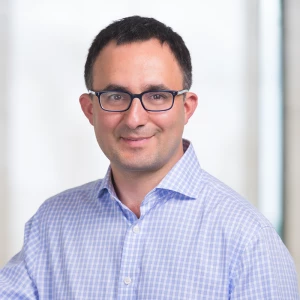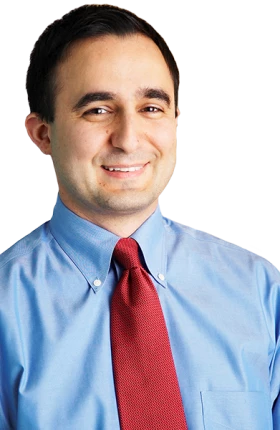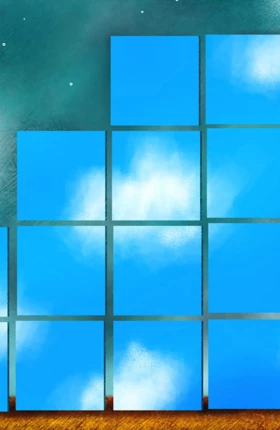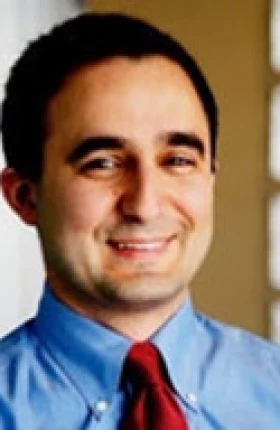One of the most urgent public conversations taking place today entails how best to educate the world’s children. How can we improve graduation rates and close the so-called “achievement gap” between students of different family incomes, races, and geographies? As well it should, much of this conversation involves robust debate about the allocation of public and private resources, the quality and performance of teachers and schools, the fairness and effectiveness of standardized testing, the use of new technologies, and more. It’s a broad and complex landscape, leaving students, parents, teachers, and administrators both anxious and excited about the future of education .
I have the pleasure of a role focused entirely on creativity in business—I am not an expert on education systems and challenges. But I have spent years helping major organizations, public and private, try to prepare for an uncertain future and develop innovative approaches, products, and services to keep pace with rapidly evolving trends. I have taught creativity to thousands of BCG folks and clients over the years, based on our approach to creativity called thinking in new boxes . And so during this back-to-school season, some ideas about education emerged.
First and foremost, foster doubt: As a society and as individuals, we need to reevaluate whether the most fundamental ideas, beliefs, and assumptions about education that we’re currently harboring are still actually serving us well. In order to come up with effective new ideas, paradigms, and solutions, we’ll need to imagine numerous possible futures for our children. And the intellectual starting place for creating and evaluating such multiple future scenarios is doubt.
Specifically, to come up with useful new paradigms or mental frameworks—or what we call “boxes”—you have to start by identifying and challenging some of the existing assumptions and constraints that make up your current way of seeing and doing things. And if you fail to acknowledge that your current thinking is only just that—a set of working hypotheses or “boxes” that are subject to change—if instead you consider (or allow them to become) “gospel” locked in stone, then you are highly unlikely to come up with any fresh and exciting ideas.
When it comes to the specific matter of preparing our children for life—of determining whether they are in fact “good students” at “good schools”—we need to doubt all of the perceptions we harbor about what education is, and what it requires. We need to doubt our ideas about what a good student, or good teacher, or good school involves, what a curriculum should include, and how students’ understanding of that curriculum should be confirmed. And we need to doubt what “success” means and how it should be measured, what a job or career or vocation entails, and what it truly takes to ready young people so that they can perform in those adult pursuits when the time actually comes. Because of the way the human brain works, we—as the adults who love and care so deeply about our children—will be unable to come up with the most creative and practical approaches to teaching our children if we allow ourselves to remain frozen in our own rigid beliefs, rule sets, and assumptions.
For example, if you think charter schools, say, are the only possible answer, or are a uniformly bad idea, or if you otherwise get too stuck in your existing ways of analyzing and doing things, your perceptions are holding you back, and bad outcomes, even disaster, can ensue. Throughout the educational system, in the workplace, and across all segments of our lives, we need to recognize that identifying and then challenging our current frameworks and perspectives is critical if we are ever going to learn how to see the world differently, and find new ways of solving problems.
Four more suggestions build on the general exhortation to doubt:
Think twice. Any problem or question, any issue big or small, will best be approached by thinking twice. Think about the problem through both a deductive lens and an inductive one. Children should be taught using both approaches, and adults should strive to solve the world’s thorniest problems, including that of education and the achievement gap, using these same two distinct yet complementary ways of thinking. Memorizing facts and learning how to recall them is one helpful deductive approach to learning. Mastering material and filling out worksheets and multiple choice bubbles all have their place. But relying exclusively, or even primarily, on such deductive methods isn’t sufficient. We also must encourage children to learn how to generate lots of new ideas, try them out, and see which ones are successful and which ones aren’t—and adults shouldn’t forget the dual approach either. To paraphrase the double-Nobel-Prize-winner Linus Pauling, the best way to have a good idea is to have a lot of ideas.
Celebrate failure. When our children come up with lots of new ideas in response to any question or issue, many of them will not be “good ideas,” defined by whatever criteria apply. Most children going back to school this month, especially the younger ones, will be welcomed into an environment where experimentation is encouraged and where learning new things about the world in front of them enables them to change the way they interpret it and come up with new ideas all the time. Many of these ideas will be “wrong” or impractical—but they are a critical part of learning and of achieving anything worthwhile. Sadly, as these children grow up, too many of them will be faced with larger lecture halls, LSAT and MCAT study centers, and cubicle farms, where “the right answer” is valued above all else. The spirit of experimentation brought to the best of early childhood education must also be brought to children’s ongoing educational experiences lest they learn to repress their wild ideas, to simply prepare for the test, and to stifle their instincts. We believe that even a “wrong” idea is a useful one, if it was arrived at through a thoughtful process, and that it’s critical to encourage, and even celebrate, your children’s failures!
It famously took Edison hundreds of tries before he developed the incandescent light bulb. And when people think back to the early computer age, or the dawn of the mass-produced automobile, they often recall the Apple II, or the Model T Ford—but what about the Apple I, or the Model A? About 200 Apple Is were essentially hand-built by Steve Wozniak and were put on sale for $666.66 in 1976—each was a circuit board with about 60 chips but lacked a case, a power switch, a keyboard, a display, a power supply, or storage. In terms of being a profitable and practical product, it was certainly a failure. But today it is a collector’s item—because without it, there could have been no Apple II. Henry Ford similarly had to go through Models A, B, C, K, N, R, and S before he got to the Model T, which remains today the second-best-selling car of all time, with 16 million units sold.
(Side note: to preempt some angry comments and e-mails, let me clarify that if a student fails a test, this is not necessarily cause for celebration. But to me, the type of failure that emerges from a thoughtful creative process is cause for celebration regardless of the end result—it means you’re trying, putting new possibilities out there, and using the inductive, imaginative thought processes that are urgently needed.)
Survive success—it’s as important as celebrating failure. The flip side of the above is this: learning how to “survive your own success” is as critical as allowing yourself lots of failed attempts to get there. When you or your child is succeeding at school, bringing home perfect report cards and impeccable test scores, there are risks associated with the seemingly safe assumption that your child is a good student at a good school. Accepting the status quo is always dangerous territory. Not only are many students graduating from top universities having trouble finding jobs, but sometimes the very students whom many agree are intelligent, hard working, and certainly “good,” are somehow not prepared for the real world that awaits them. Yes, they’re successful. And yet, they’re not actually surviving their own success. Rather, they’re stuck in the box that assumes that a “good education” means a “good job.”
Even Henry Ford, after the fantastic success of the Model T, refused to adapt to the changing world around him, and almost drove his company into the ground. In a world that is constantly evolving, surviving success can be just as hard as succeeding in the first place. Or, as the great (in my view) Marshall Goldsmith said, “what got you here won’t get you there.”
A big source of the problem here is again our failure to doubt, to ask ourselves something as fundamental as “What is success?” Many advanced societies seem to believe that young people who are talented at pursuits like cooking and typing and building things, but who are less skilled at memorizing Shakespeare and solving Fermat’s last theorem, are not particularly “good” students and are destined for socially less valued and esteemed “vocational” schools. But are these young people with practical skills in fact less “good” as students than those with stronger academic merits? If they don’t perform well on standardized tests and don’t go on to four-year liberal arts colleges, have the former set of students failed to achieve success?
Conversely, for those who believe that colleges and universities prepare students best for the “real world” by teaching them Chaucer and Schumpeter, Keynes and Pythagoras, Einstein and Bernstein, why are so many of these institutions producing students who lack the skills they need to find jobs after graduating? Should these educational institutions include more “vocational” training? Should employers develop different hiring standards? Might colleges and universities and workplaces spend more time together pondering these questions?
When students do get jobs and find themselves in various workplaces, some of them are tasked with “continuing education.” The current box for such ongoing career training is that it will be skill-based, focused on the expertise most immediately pertinent to the particular workplace? But if we train people for the workplace with a liberal arts education, why don’t we continue that across their ongoing work experiences? Why is continuing education almost always vocational? Why not insist that lawyers and accountants and nurses and engineers continue studying literature and economics, physics, and the arts?
And to open a whole new set of possibilities, what about MOOCs, online learning, and some of the pioneers in this space? Will traditional schools faced with this new approach adapt, persist, wither, and/or flourish?
Finally, take risks, and always remember that what seems impossible today may very well be possible tomorrow. I certainly don’t pretend to have the answers to the questions I pose above. But I trust that anyone reading this shares a goal of giving every child what he or she needs to thrive, survive, and find joy in this life. And from my perspective, the suggestions above will benefit children, parents, educators, and society in general. I’d love to keep the conversation going and look forward to your feedback @Alan_Iny or via LinkedIn.
This commentary
originally appeared
on LinkedIn.






